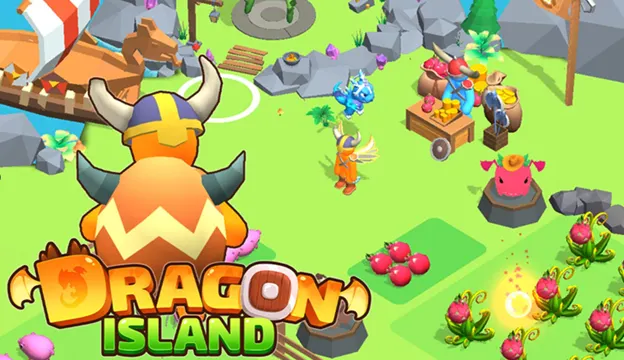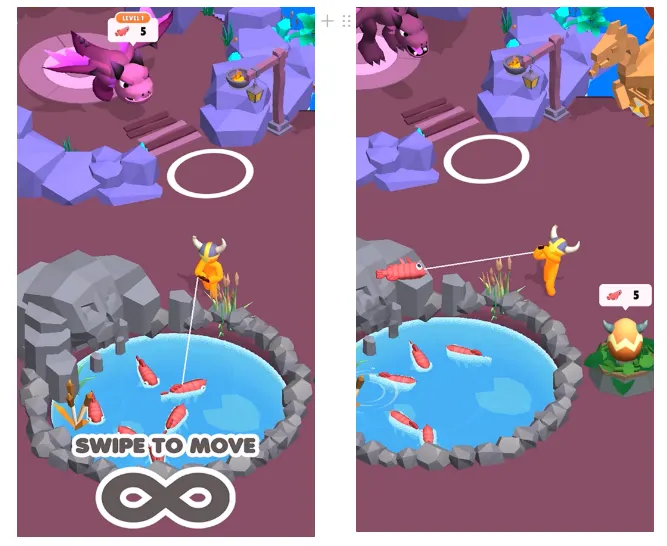Do you want to create a global hit game played by millions of users around the world?
We have a great idea, and we want to make this game and present it to users all over the world.
A-Z of a game that must be accompanied in order to implement a game: implementing the basic flow of a game, adjusting balance, collecting events, fixing bugs, localization, etc., require considerable resources.
What actions can we take if the reaction of users is not what we expected when we introduce a game made with so many resources into the market? You can take the process of finding the cause of failure, drawing improvements, and analyzing it, but improving a game that's already advanced a lot is more resource-intensive and may require an entire change of direction.
For mobile casual games, it's important to go through lots of prototyping and iterative test cycles to find opportunities to discover the best potential and create games that can be enjoyed for a longer period of time.
In the case of our studio, where a small number of people develop in a fast cycle, we focus on improving the efficiency of game development by advancing the rapid development-testing-improvement cycle.
Quickly read market users and trends, focus more on developing highly marketable games, and seize the fun of areas that need improvement from the early stages to maximize performance and potential.
Predicting the game's potential
Even if our idea is good and attractive enough, it is very important to predict whether the game has the potential to be successful in the long run. For a successful game launch, we initially develop a prototype with minimal concepts to test user reactions, and conduct a CPI Test to verify it.
What is CPI?
CPI is a number that represents Cost Per Install, or cost incurred per installation, and is an indicator of how cost-effectively an advertisement exposed through UA activities will be converted well and can predict marketability.
When the market size of how many users can be converted into installs is verified through various user acquisition (UA) activities, and the possibility of traffic expansion is verified through detailed retention measurement, the criteria set by the company are met. Develop games.
A low CPI means that a large number of users can be brought in at a cost-effective cost, which means the sustainability of generating enough revenue through casual games. If the initial CPI TEST figures come out positive, you can develop the game in more detail and think about a design that can increase play time and survival.
Creating a game that can be soft-launched
If the marketability of the game is verified through the CPI test, a prototype that can be soft launched is developed in a short period of time. In the previous step, we got some basic data on what needs to be improved early on.
We figure out at what point users deviate and at what stage their motivation to play weakens, develop a prototype of an improved version, and determine whether to move on to the advanced stage through sufficient testing. Test cycles are repeated at short intervals to verify content and quickly measure changes in game indicators.
Of course, the game may drop during this process. Based on the user's revisit or initial play experience data, the game quality, which can be called the initial framework, is verified. If the indicators at this time are too insufficient, a completely new design may be a faster method. In general, it's not easy to give up on your creations when you're making a game. However, since we decide whether to drop based on reasonable criteria, we can discuss the reason for failure and move on.
Optimized for games loved by users
In order to create a game that is loved for a long time in the long run, we are working on optimizing and checking data from Day 7 or higher based on inflow. Optimization work includes diversification of internal marketing materials, global marketing, monetization and continuous update, internal operation process and game operation through Flamingo service.
To make the optimization process fast and efficient, we not only develop and utilize our own publishing and analysis modules, but our professional creative team continuously creates new and creative videos to support our marketing activities.
Publishing platform Aloha SDK
Aloha SDK is an integrated game data analysis tool for game development and marketing. It is an integrated publishing solution that can collect and analyze data generated from games by installing Aloha SDK. Accelerate the monetization and analysis process through data analysis as well as advertising and basic modules required for games.
creative creative support team
Aloha Factory's professional creative team works together to optimize CPI by diversifying marketing materials and maximize the effectiveness of UA activities. We are producing the most creative and effective marketing materials through regular market trend research and research by various creatives.
Case study “Dragon island” by Aloha Factory PD Sumin Lee
Aloha Factory's “Dragon Island” is a global hit game that was born through this production process.
”Dragon Island” is an idle arcade game where you collect island resources, grow dragons, and discover new islands of dragons. In the overall planning, the dragon was planned to collect resources, upgrade, and open the island, but in the beginning, prototype-level development and marketability tests were conducted.
 What level did you initially develop in the CPI test phase?
What level did you initially develop in the CPI test phase?
What level did you initially develop in the CPI test phase?
During the initial testing phase, development focused on the experiences the game most definitely appealed to players. When we first came up with the concept of Dragon Island, the corresponding parts were "feeding and raising the dragon" and "the process of acquiring food".
So, in the initial CPI test stage, the dragon's growth system, where the character brings food to the dragon and grows by eating the food, and the interaction system, which catches or grills the pig that becomes food, were developed with top priority.
This concept received a positive response from users, and the CPI result was very good, around $0.5 in North America.
Next, I made and put in the minimum game elements to show the experience well. This included basic character movement, action feedback, and map placement.
Are there any points that were newly discovered and improved for the fun of users while repeating the production process?
After confirming that players are attracted to the basic experience of the game through the CPI test, we started adding game systems and content that could enhance the experience in various ways.
One of the game systems that I thought was the most appropriate addition was the Pet Dragon system. At the prototype level of the game, a lot of attention was paid to the feedback on the dragon's growth itself, but after one growth cycle was over and the island was cleared, the sense of reward for the dragon's growth was slim.
Therefore, we conceived content with the player character in the form of a pet, and gave players a role as a collection with stats that affect in-game, rewarding players for their efforts to grow dragons while traveling around the island. provided to make it work.
On the other hand, there were also systems that were removed for the sake of the game experience.
For the concept of feeding various dragons in the initial plan, there was a system to maintain the level of automatic production by feeding the worker dragons in charge of automatic production. In the process of developing the game, we analyzed based on game data and received feedback through in-house testing. As a result of checking the system based on various hints, the experience of feeding the dragons and distributing resources was clearly enhanced, but it put too much burden on the player, and it was judged that it was an element that caused excessive fatigue to the players. It has been.
In other words, the system was not suitable for the target audience who wanted to enjoy the game more lightly. So the devs decided to remove the system, which immediately showed positive results in the player experience. In fact, as a result of A/B testing compared to the existing system, it showed a 37% increase in indicators compared to the previous system.
These strategic elements can be applied not only to hyper-casual game development, where development cycles are short and trends change quickly, but also to more core genre games. In the process of developing a game step by step, methods that determine the possibility of a game based on data and advance game elements in detail suggest a faster way to make a game that users want.
Aloha Factory has developed more than 150 prototypes over the past two years, and has further upgraded the production process by accumulating numerous tests, improvements, and know-how. We are preparing for a successful global game by quickly completing the process from the initial concept formation phase introduced earlier to global launch, and optimizing the game through data analysis.
Do you want to learn more about easy ways to access and improve data?
Become a partner of Aloha Factory!
 Aloha Factory Publishing Guide
Aloha Factory Publishing Guide



